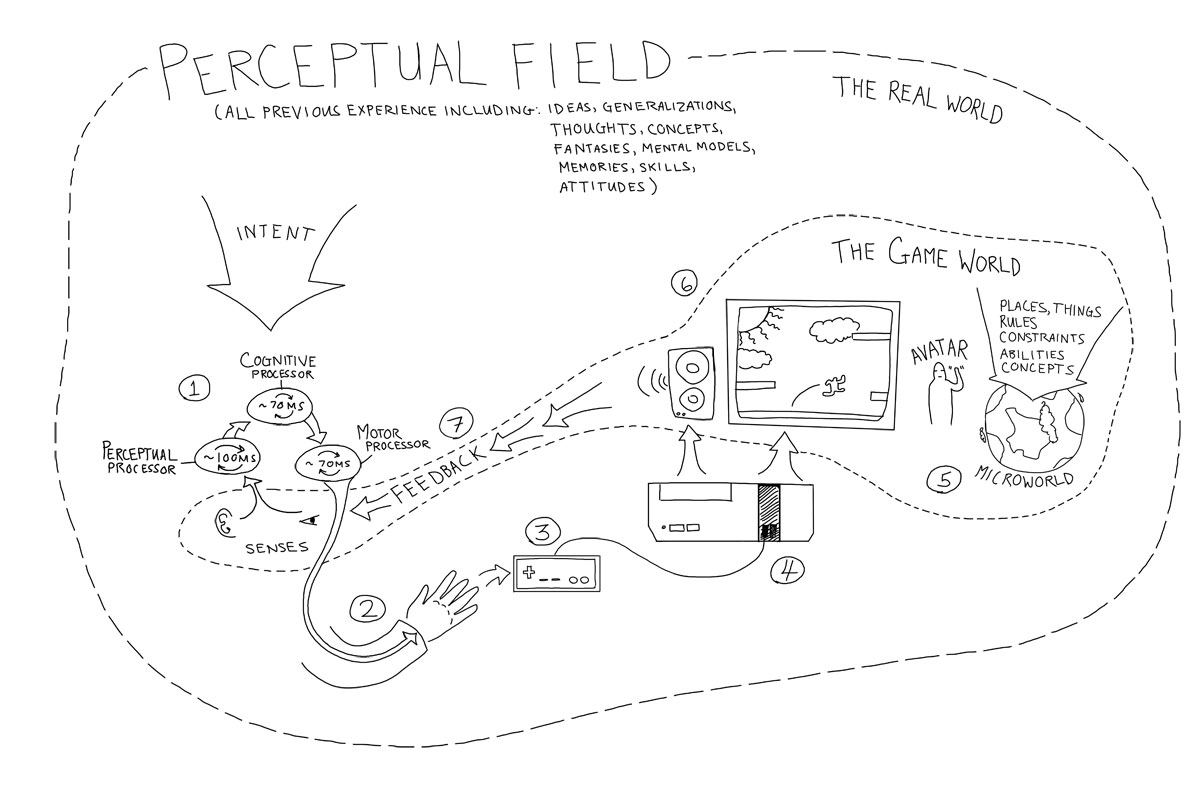
Read the first chapter of Game Feel by Steve Swink (unfortunately the interactive examples are currently offline) before you start working on the control system or game clone. Try to improve the feel of the assigned title or experiment with different kinds of controls and be ready to present your findings in class (no written responses).
Steve Swink worked on many indie games and is currently developing a first person puzzle called Scale.

the sadness of not having the physical book
“Now please throw this book across the room and into a wall… Now noodle the book around in your hands, feel its weight and heft and thumb quickly through the pages, listening to the pleasing sound it makes. What do you notice? A paperback book, like this one…”
The “Game Feel” article was actually quite interesting. The abstract idea seems like something many gamers think of – the idea of game identity, the expectation that game controls should be intuitive, the idea that games should have ‘polish’ to immerse audience, etc. However, this article is certainly the first time I’ve seen these game ideas laid out so purposefully and so articulately. More than just talking about the abstract idea of ‘game feel’ Steve Swink actually does a good job of articulating what exactly he thinks is included in ‘game feel’ (ie. intuitive controls, rewards, polish, skills, extension of senses and identity, etc). He also gives a good number of examples to back up his statements. These examples – though mostly personal- are relatable to anyone who has been in the same position. However, because of this, I wonder if his examples and argument in general would be as clear to someone who didn’t play games and did not relate to his personal tales.
The Game Feels chapter 1 highlighted a few terms that I feel we have brushed on but, like Nivetha said, has never been laid out for us like it is now. The terminology he used to describe things that created the game feel makes it easy to understand what to aim for when making our own games. I especially loved the term ‘polish’ that he threw into his analysis of the small things in games(such as foot prints, dust blowing, etc) that one would not normally think of but add a level of refinement to any game. Otherwise I also appreciated his analysis of a ‘conversation’ between human and computer when we create games. Although it is mostly one sided on the part of the human who gives the orders, there is certainly a level of interaction that needs to be made easier when designing a game (e.i intuitive controls, dynamic visuals, and more). It reminded me of the games we researched the class before; about how in the beginning, games were social and meant to be multi-player until they realized that there didn’t need to be interactions between people because there was already interactions between the computer/machine and the human.
A lot of it seems like arbitrarily making demarcations purely for its own sake, rather than applying or expanding our understanding of “game feel”. It’s easy to argue that polish and spatial simulations help emphasize game feel immensely, but to argue that those components are essential aspects of game feel sounds fallacious and, at the same time, prohibitively limiting. It’s as pointless as arguing what “art” is and drawing up a bunch of qualities as its essence. Definitions change with context, and as long as we can productively discuss the concept within a mutually understood context, it doesn’t matter if the dictionary doesn’t agree. Even the rest of this very chapter didn’t really need the definition.
What a fun discussion; I would love to read more of the book regarding specific ways to add and modify game feel, but this chapter stands as a good introduction. While talks like Juice It or Lose It (https://www.youtube.com/watch?v=Fy0aCDmgnxg) might be a better quick and dirty intro, I feel that the theory presented in this reading lays a good, solid foundation to how to make games not only fun, but feel good to play.